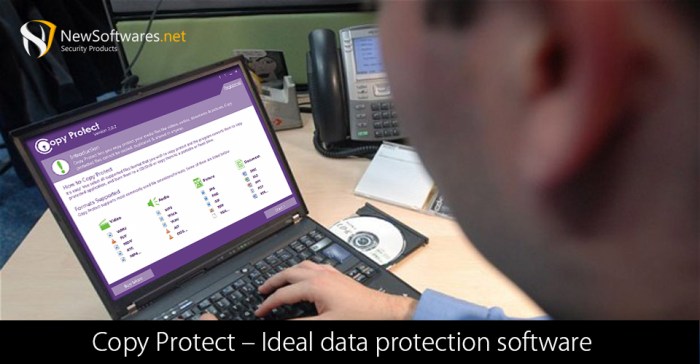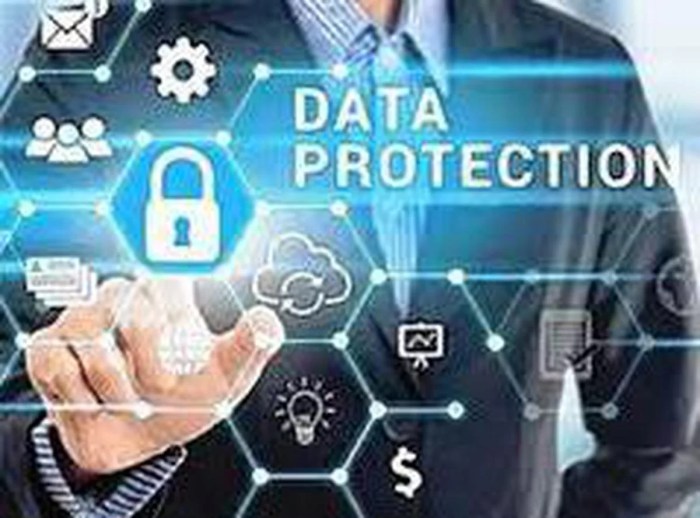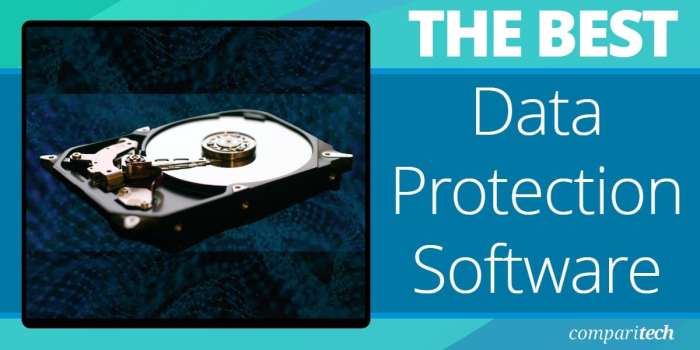Software to protect data – In today’s digital landscape, data is the lifeblood of businesses and individuals alike. From sensitive financial information to personal details and intellectual property, the need for robust data protection is paramount. A single data breach can have devastating consequences, leading to financial losses, reputational damage, and legal repercussions. This comprehensive guide explores the various software solutions available to protect your valuable data, offering insights into their functionalities, benefits, and considerations for choosing the right fit for your needs.
Understanding the Data Protection Landscape
Before diving into specific software solutions, it’s crucial to understand the types of threats your data faces. These threats range from malicious attacks like malware and ransomware to accidental data loss due to human error or hardware failure. Effective data protection strategies must address these threats proactively.
Types of Data Protection Software
- Antivirus and Antimalware Software: This forms the first line of defense, detecting and removing malicious software that can steal, encrypt, or damage your data. Examples include Norton, McAfee, and Bitdefender. These often incorporate real-time protection, scanning files and processes as they occur.
- Firewall Software: Firewalls act as a barrier between your network and external threats, monitoring and controlling incoming and outgoing network traffic. They prevent unauthorized access to your system and data. Many routers include built-in firewalls, while advanced firewalls offer more granular control and logging capabilities.
- Data Loss Prevention (DLP) Software: DLP solutions monitor and prevent sensitive data from leaving your network without authorization. This is crucial for protecting confidential information from being emailed, printed, or copied to unauthorized devices. Examples include Forcepoint and Symantec DLP.
- Data Encryption Software: Encryption transforms data into an unreadable format, protecting it from unauthorized access even if it’s stolen. This is particularly important for sensitive data like financial records and personal health information. Software like VeraCrypt and BitLocker provide robust encryption capabilities.
- Backup and Recovery Software: Regular backups are essential for protecting against data loss due to hardware failure, malware attacks, or accidental deletion. Software like Acronis True Image and Carbonite automate the backup process and offer various recovery options.
- Intrusion Detection and Prevention Systems (IDPS): These systems monitor network traffic for suspicious activity, alerting administrators to potential threats and automatically blocking malicious attempts. Sophisticated IDPS solutions use machine learning to identify and respond to advanced persistent threats (APTs).
- Endpoint Detection and Response (EDR) Software: EDR solutions monitor endpoints (computers, laptops, mobile devices) for malicious activity, providing detailed insights into threats and enabling rapid response. They often integrate with other security tools to provide a comprehensive security posture.
Choosing the Right Data Protection Software
Selecting the appropriate data protection software depends on several factors, including the size and type of your organization, the sensitivity of your data, and your budget. Consider the following:
Factors to Consider:, Software to protect data
- Scalability: Can the software handle your current data volume and anticipated growth?
- Ease of Use: Is the software intuitive and easy to manage, even for non-technical users?
- Integration: Does the software integrate with your existing IT infrastructure and other security tools?
- Cost: What is the total cost of ownership, including licensing fees, maintenance, and support?
- Compliance: Does the software help you meet relevant industry regulations and compliance standards (e.g., GDPR, HIPAA)?
- Support: Does the vendor provide adequate technical support and documentation?
Best Practices for Data Protection
Beyond implementing data protection software, adopting best practices is crucial for maintaining a strong security posture. These practices should be integrated into your overall data security strategy.
Essential Data Protection Practices:
- Strong Passwords: Use unique, complex passwords for all accounts and consider using a password manager.
- Regular Software Updates: Keep your operating systems, applications, and security software up-to-date with the latest patches and security updates.
- Employee Training: Educate your employees about data security threats and best practices, including phishing awareness and safe browsing habits.
- Access Control: Implement strong access control measures, granting only authorized personnel access to sensitive data.
- Data Encryption: Encrypt sensitive data both in transit and at rest.
- Regular Backups: Regularly back up your data to a secure offsite location.
- Incident Response Plan: Develop and regularly test an incident response plan to address data breaches and other security incidents.
Frequently Asked Questions (FAQ)
- Q: What is the best data protection software? A: There is no single “best” software; the optimal choice depends on your specific needs and budget. Consider factors like scalability, ease of use, and integration with existing systems.
- Q: How much does data protection software cost? A: Costs vary widely depending on the software, features, and number of users. Some offer free versions with limited functionality, while enterprise solutions can be quite expensive.
- Q: Is data protection software enough to protect my data? A: While software plays a crucial role, it’s not a silver bullet. Best practices like strong passwords, regular updates, and employee training are equally important.
- Q: What should I do if I suspect a data breach? A: Immediately isolate affected systems, investigate the breach, and contact relevant authorities and affected individuals. Follow your incident response plan.
- Q: How often should I back up my data? A: The frequency depends on the criticality of your data. For critical data, daily or even hourly backups may be necessary. For less critical data, weekly or monthly backups might suffice.
Conclusion: Software To Protect Data
Protecting your data is a continuous process requiring a multi-layered approach. By combining robust data protection software with best practices and a well-defined security strategy, you can significantly reduce your risk of data breaches and ensure the confidentiality, integrity, and availability of your valuable information. Remember that proactive measures are far more cost-effective than reactive responses to data breaches.
References
- National Institute of Standards and Technology (NIST)
- Cybersecurity and Infrastructure Security Agency (CISA)
- National Cyber Security Centre (NCSC)
Call to Action
Ready to take control of your data security? Contact us today for a free consultation to assess your needs and find the right data protection solution for your organization.
FAQ Section
What is the difference between antivirus and anti-malware software?
Antivirus software primarily focuses on detecting and removing viruses, while anti-malware software has a broader scope, encompassing various threats like spyware, ransomware, and Trojans.

Source: newsoftwares.net
How often should I update my data protection software?

Source: businessfig.com
Regular updates are crucial. Most software providers release updates frequently to address new threats and vulnerabilities. Automatic updates are generally recommended.

Source: comparitech.com
Is cloud-based data protection secure?
Cloud-based solutions can offer robust security, but the security level depends heavily on the provider’s infrastructure and security practices. Choose reputable providers with strong security certifications.
What is data encryption, and why is it important?
Data encryption converts data into an unreadable format, protecting it from unauthorized access even if it’s stolen. It’s crucial for safeguarding sensitive information like financial data and personal records.
